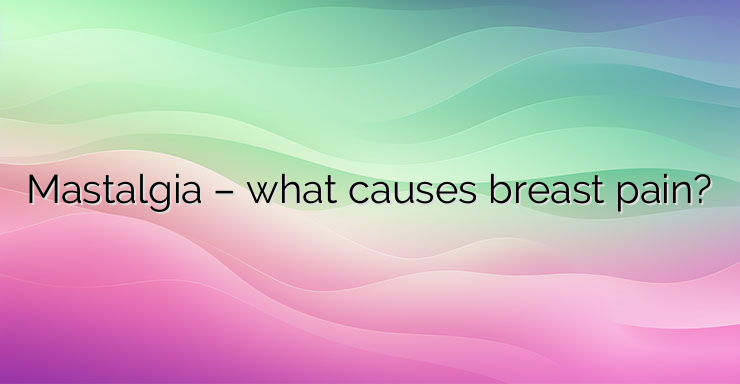Mastalgia is chest pain. There are 2 main types of mastalgia: Cyclical breast pain. This is the pain associated with menstruation. Non-cyclic chest pain. This type of pain can come from the breast or from nearby muscles or joints, and can be felt in the chest. The pain can range from mild discomfort to severe debilitating pain in some cases. Many women with breast pain fear that they may have breast cancer. But chest pain is rarely associated with malignancy in this area. The most common type of breast pain is related to the menstrual cycle. It is almost always hormonally determined. Some women start to experience pain during ovulation. The pain lasts until the start of their menstrual cycle and may be barely noticeable. Or it may be so severe that you cannot wear tight clothing or handle close contact of any kind. The pain can be felt only in one breast. Or it may feel like a radiating sensation in the armpit area. Scientists continue to study the role of hormones in cyclic mastalgia. A study suggests that some women with this condition produce less progesterone than estrogen during the second half of the menstrual cycle. Other studies have found that an abnormality in the hormone prolactin can affect breast pain. Hormones can also affect cyclical breast pain due to stress. Breast pain may increase or may change its pattern with hormonal changes. Hormones may not provide the full answer to cyclical breast pain. This is because the pain is often worse in one breast than the other. In pain related to hormonal imbalance, both breasts are affected equally. Many researchers believe that the answer may be a combination of hormonal activity and something in the breast that responds to that activity. But there is no proven link yet. Treatment for cyclic chest pain will depend on the symptoms, age and general condition. The type of therapy varies widely and may include avoiding caffeine, taking vitamin E, and a low-fat diet. In some cases, various additional hormones and hormone blockers are also prescribed. These include birth control, bromocriptine (which blocks prolactin in the hypothalamus), thyroid hormones, or tamoxifen (an estrogen blocker). Patients should be aware that additional hormones and hormone blockers can have side effects. In addition, the risks and benefits of such treatment should be carefully discussed with the treating physician. Noncyclical breast pain is quite unusual, feels different from cyclical mastalgia, and does not vary with the menstrual cycle. Usually, the pain is present all the time and is only in one specific place. One cause of non-cyclic chest pain is trauma or impact to the breast. Other causes may include arthritic pain in the chest cavity and neck,which radiates down to the chest. Finding the best treatment for non-cyclical chest pain is more difficult. This is because it is difficult to know exactly where the pain is coming from. Also, the pain is not hormonal. Treatment will depend on symptoms, age and general health. In order to find the root cause of the pain, it is recommended to perform a mammogram. In some cases, a biopsy is also necessary. Depending on where the pain starts, treatment may include pain relievers, anti-inflammatory medications, and compresses. Source: www.hopkinsmedicine.org


Leave a Reply